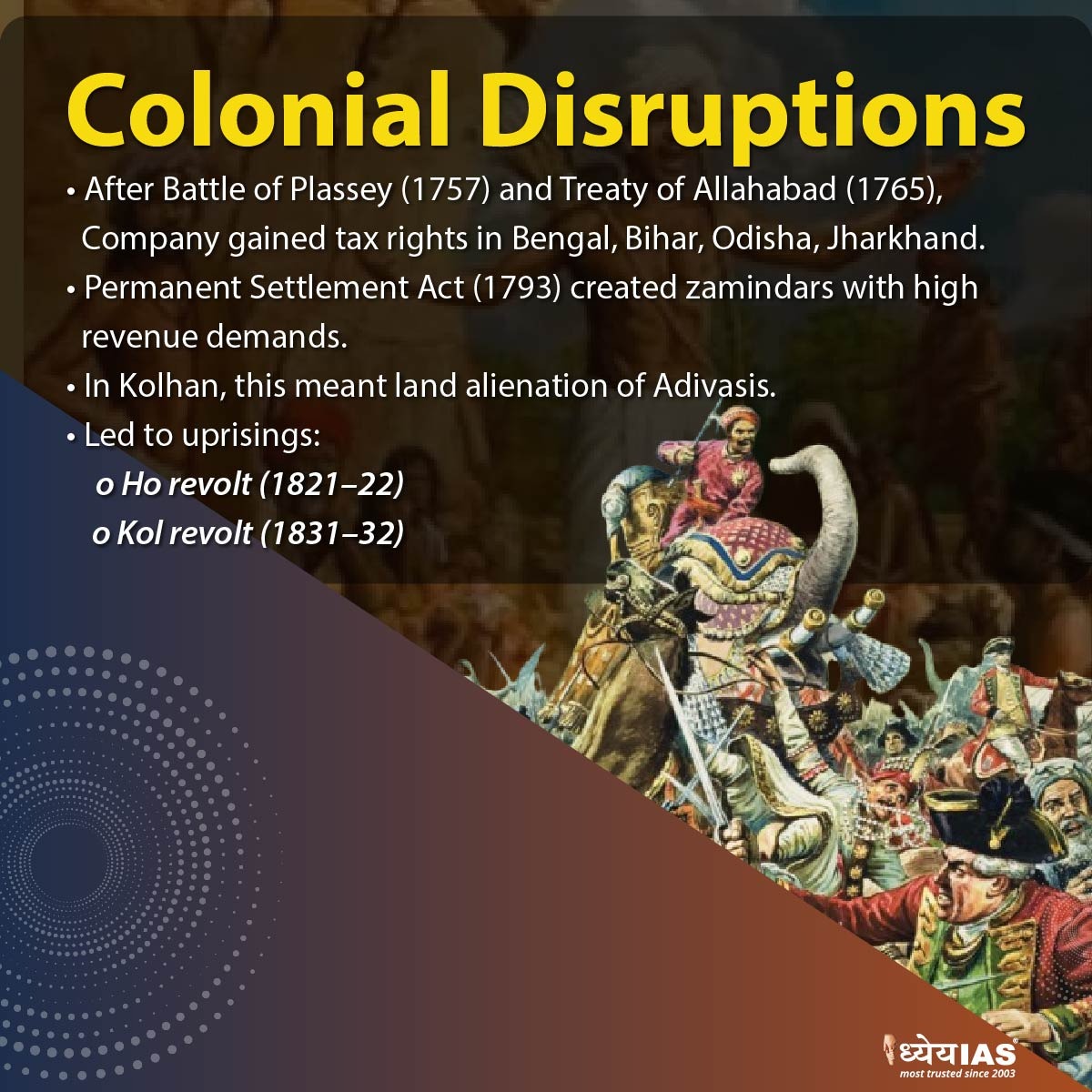Context:
Recent protests by the Ho tribals in Jharkhand’s Kolhan region have sparked a debate over the future of the Manki-Munda system, a traditional self-governance model central to the region’s tribal administration.
Current Conflict and Protests:
Recent protests in West Singhbhum district erupted after rumors circulated that the Deputy Commissioner (DC) was interfering with the Manki-Munda system by removing some Mundas. Despite the district administration’s clarification, many Ho tribals fear losing their cultural autonomy and governance structure.
About Manki-Munda System:
The Manki-Munda system is a decentralized, community-driven model of governance followed by the Ho tribe in Jharkhand’s Kolhan region.
· In this system, the Munda, the head of a village, resolves local disputes, while the Manki, overseeing a cluster of villages, handles unresolved issues from the Munda level.
· Operating independently of state-imposed taxes, this system historically maintained internal order based on community customs.
History of the Manki-Munda System
- Pre-British Era: The Ho tribe governed itself autonomously, with Mankis and Mundas serving as leaders in familial and social matters without external interference.
- British Era: The East India Company’s arrival disrupted this system. The Permanent Settlement Act (1793) imposed land taxes, leading to tribal uprisings. To quell resistance, the British co-opted the Manki-Munda system, using it as intermediaries to control the region while maintaining local autonomy. In 1833, Captain Thomas Wilkinson formalized the system with Wilkinson’s Rules, integrating it into British governance.
Post-Independence
After India’s independence, Wilkinson’s Rules continued to govern tribal affairs in Kolhan. Though Patna High Court in 2000 deemed these rules outdated, they remain in practice.
· The Nyaya Panch system was introduced in 2021 for revenue-related functions, but the Manki-Munda system persists, particularly in rural areas where traditional governance is still integral to community life.
Reform Demands by youth:
There are growing calls for reform in the Manki-Munda system, particularly from the younger generation. Many argue that the hereditary nature of leadership no longer suits modern administrative needs, as many Mankis and Mundas lack formal education.
· Efforts to fill vacant positions and simplify the system are underway, but tensions remain as the community debates balancing tradition with modernity.
About Ho tribe:
The Ho tribe is an Austroasiatic Munda ethnic group that primarily resides in the Chota Nagpur Plateau region of Jharkhand, India.
· Their population is also spread across parts of Odisha, West Bengal, and Bihar. This indigenous community has a rich cultural heritage and an enduring connection to the land they inhabit.
Conclusion:
The Manki-Munda system is an emblem of tribal self-governance, but as Jharkhand modernizes, the system faces pressure. While some argue for preserving tradition, the need for reform is undeniable. Striking a balance between cultural heritage and contemporary governance will shape the future of this ancient system.








